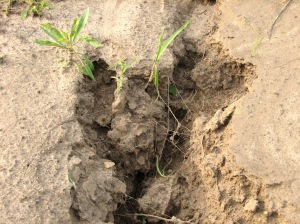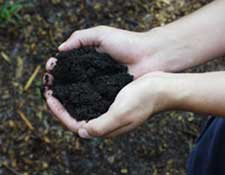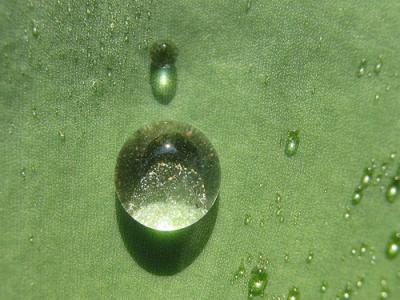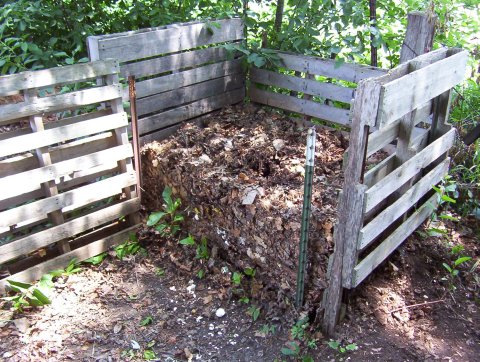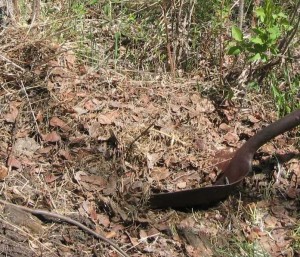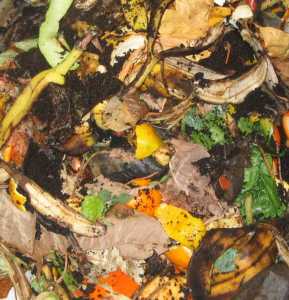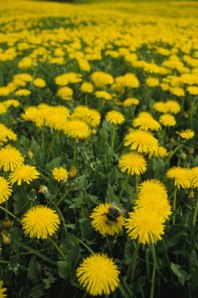Posts Tagged ‘E. Coli’
Backyard Gardens: Soil and Compost Basics
As long as you have access to sunlight, water, and soil, your own food plot is possible, to either use for yourself or share with friends and neighbors. However, even with our region’s reputable soil, it is not a bad idea to get your soil tested. Understanding the condition of your soil and water supply can help you forsee potential risks for diseases and pests. A decent soil test can be done for only $25 and will measure the soil pH, organic matter and nutrient levels, and information on how to treat micronutrient deficiency in order to prepare your soil to grow perfectly nutritious food. Soil deficiency and degradation can be caused by erosion, over fertilization, and/or pollution.
Soil pH is an important part to the development of vegetable plants. The pH is a measure of the acidity or alkalinity of a substance. The pH scale is a range from 1 to 12, with 1 being the most acidic and 12 being the most alkaline or basic. Either extreme can be toxic. Room temperature drinking water, for example, should have a balanced measurement of 7. There are several reasons why gardeners and farmers, alike, should consider their soil pH.
- Certain plants and soil life forms (like good bacteria, arthropods, earthworms) prefer specific conditions.
- Some plant diseases and pests tend to thrive when the soil is either alkaline or acidic.
- The pH can affect the availability of nutrients in the soil. Slightly acidic soil increases the concentration of nutrients potassium (K), magnesium (Mg) and calcium (Ca), which are necessary for plant life.
Vegetables flourish in well-drained soil that is rich in organic nutrients and measures a little on the acidic side of the pH scale. In fact, the preferred pH for almost all vegetables is between 5.5 to 6.5 pH. Here is a list of various vegetables and their preferred pH.
The cheapest way to add nutrients to your soil is by composting. The How To Compost website offers excellent information about composting and pages of tips, tricks and products to help making the process easier. However, you can make it and use it without spending any extra money. Here are some paraphrased explanations and recommendations from their site for first-time composters who want to know more about the process.
Why Compost?
Compost is one of nature’s best mulches and soil amendments and you can use it instead of commercial fertilizers. Using compost improves soil structure, texture, and aeration and increases the soil’s water-holding capacity. Compost loosens clay soils and helps sandy soils retain water. Adding compost improves soil fertility and stimulates healthy root developments in plants. The organic matter provided in compost provides food for microorganisms, which keeps the soil in a healthy balanced condition. Soil organisms produce compounds that enhance the growth of plants. The symbiotic relationships within this ‘living soil’ cycles nutrients, enhances soil structure, which improves optimal water and air movement in topsoil. Nitrogen, potassium, and phosphorus will be produced naturally by the feeding of microorganisms, so few if any soil amendments will need to be added.
Most gardeners have long understood the value of this rich dark earthy material in improving the soil and creating a healthful environment for plants. Balanced soil biology will protect your plants from disease. Understanding how to make and use compost is in the public interest, as the problem of waste disposal climbs toward a crisis level. Landfills are brimming and new sites are not likely to be easily found. For this reason, there is interest in conserving existing landfill space and in developing alternative methods of dealing with waste. Our hands are being forced to deal creatively with our own yard waste, as one by one, cities are trying to cut costs by eliminating programs to haul off our leaves and grass clippings. About one third of the space in landfills is taken up with organic waste from our yards and kitchens, just the type of material that can be used in compost. With a small investment in time, you can contribute to the solution to a community problem, while at the same time enriching the soil and improving the health of the plants on your property. Studies have shown that home composting can divert an average of 700 lbs. of material per household per year from the waste stream. Composting is an excellent way to avoid both wasting useful, natural resources and creating environmental problems, while at the same time producing a high quality and inexpensive soil amendment. Don’t throw away materials when you can use them to improve your lawn and garden – Start composting instead!
The Compost Decomposition Process
Compost is the end product of a complex food chain involving hundreds of different organisms, including bacteria, fungi, worms, and insects. What remains after these organisms break down organic materials is the rich earthy substance your garden will love. Humus is our goal when we start composting. Composting replicates nature’s system of breaking down materials on the forest floor. As your compost produces humus, it becomes a mixture of nutrients that have been broken down completely, allowing plants to absorb the benefits. Humus also physically keeps soil light and fluffy, optimal for growing plants. Some experts even suggest using soil from a wooded area (if available) to help start your compost pile.
By providing the right environment for the organisms in the compost pile, it is possible to produce excellent compost. We usually want to organize and speed up the process of nature, sometimes to it’s detriment. However, by knowing the perfect conditions of heat, moisture, air, and materials, we can speed up the composting process, aiding the energy cycle without harming the environment. Making the compost faster also creates heat which will destroy plants diseases and weed seeds in the pile, benefiting your garden with you in control.
Carbon and nitrogen are the two fundamental elements in composting, and their ratio (C:N) is significant. The bacteria and fungi in compost digest or “oxidize” carbon as an energy source and ingest nitrogen for protein synthesis. Carbon can be considered the “food” and nitrogen the digestive enzymes.
Composting can range from passive – allowing the materials to sit and rot on their own – to highly managed. Whenever you intervene in the process, you’re managing the compost. How you compost is determined by your goal. If you’re eager to produce as much compost as possible to use regularly in your garden, you may opt for a more hands-on method of composting. If your goal is to dispose of yard waste, a passive method is your answer.
Passive Composting involveds the least amount of time and energy on your part. This is done by collecting organic materials in a freestanding pile. It might take a long time (a year or two), but eventually organic materials in any type of a pile will break down into finished compost. More attractive than a big pile of materials sitting in your yard is a 3-sided enclosure made of fencing, wire or concrete blocks, which keeps the pile neater and less unsightly. Add grass clippings, leaves, and kitchen scraps (always cover these with 8 inches of other material). The pile will shrink quickly as the materials compress and decompose. Wait a year or two before checking the bottom of the bin for finished compost. When it is ready, shovel the bottom section into a wheelbarrow and add it to your garden beds. Continue to add greens (nitrogen) and browns (carbon) to have a good supply of finished compost ready. After the first few years, most simple piles produce a few cubic feet of finished compost yearly.
Consider the C:N Ratio, Surface Area, Temperature, Moisture and Oxygen Levels in Your Compost Pile – It is EASY.
Managed composting involves active participation, ranging from turning the pile occasionally to a major commitment of time and energy. If you use all the techniques of managing the pile, you can get finished compost in 3-4 weeks. Choose the techniques that reflect how much you want to intervene in the decomposition process and that will be a function of how fast you want to produce compost. Experts have determined that the fastest way to produce fertile compost is to maintain a carbon to nitrogen ratio somewhere around 25 to 30 parts carbon to 1 part nitrogen. Deciding this ratio in your own yard isn’t as complicated as it may seem. Adding 3-4 pounds of nitrogen material for every 100 pounds of carbon should be satisfactory for efficient and rapid composting. [See chart below for examples of carbon and nitrogen sources that are appropriate for compost.] If decomposition is slow and your pile is dry, there is too much carbon. If your pile is particularly stinky and sloppy wet, then you have too much nitrogen. If you want to get technical with your carbon to nitrogen ratio, you can reference this equation.
The speed with which you produce finished compost will be determined by how you collect materials, whether you chop them up, how you mix them together, and so on. Achieving a good balance of carbon and nitrogen is easier if you build the pile all at once. Layering is traditional, but mixing the materials works as well. Shredded organic materials heat up rapidly, decompose quickly, and produce uniform compost. The decomposition rate increases with the size of the composting materials. If you want the pile to decay faster, chop up large fibrous materials yourself or with a wood chipper. You can add new materials on an ongoing basis to an already established pile. Most single-bin gardeners build an initial pile and add more ingredients on top as they become available.
The temperature of the managed pile is important – it indicates the activity of the decomposition process. The easiest way to track the temperature inside the pile is by feeling it. If it is warm or hot, everything is fine. If it is the same temperature as the outside air, the microbial activity has slowed down and you need to add more nitrogen (green) materials such as grass clippings or kitchen waste. Use a compost thermometer to easily measure the activity of your compost. They are inexpensive and quite convenient to have. The following information is for the highly managed pile and the optimum finished compost in the shortest amount of time. Decomposition occurs most efficiently when the temperature inside the pile is between 104 F or above 131 F. This keeps the pile operating at its peak. Most disease pathogens die when exposed to 131 F for 10-15 minutes, though some weeds seeds are killed only when they’re heated to between 140 F and 150 F. If weed seeds are a problem, let the pile reach 150F during the first heating period, then drop back down to the original temperature range. Be sure to only let this happen occasionally after adding materials to the pile. If you keep the temperature above 131F regularly, the decomposing microbes will be killed off. Simply turn the pile if it gets too warm.
Organic waste needs water to decompose. If the pile becomes too dry , the decay process will slow down. The rule of thumb is to keep the pile as moist as a wrung-out sponge. If you’re building your pile with very wet materials, mix them with dry materials as you build. If all the material is very dry, soak it with a hose as you build. Whenever you turn the pile, check it for moisture and add water as necessary. Too much water is just as detriment as the lack of water. In an overly wet pile, water replaces the air, creating an anaerobic environment, slowing decomposition.
Air circulation is an important element in a compost pile. Most of the organisms that decompose organic matter are aerobic, meaning they need oxygen to survive. There are several ways to keep your pile breathing. Try not to use materials that easily compacted such as ashes or sawdust without mixing them with a coarser material first. People who passively manage large piles often add tree branches or even ventilation tubes vertically into different parts of the pile to be shaken occasionally, maximizing air circulation. The most effective way to re-oxygenate the pile is to turn the pile by hand, using a large garden fork. The object is to end up with the material that was on the outside of the original pile, resting in the middle of the restacked pile. This procedure aerates the pile and will promote uniform decomposition.
Compost Site Selection
Any pile of organic matter will eventually rot but a well-chosen site can speed up the process. Look for a level, well drained area. If you plant to add kitchen scraps, keep it accessible to your back door. Don’t put it so far away that you’ll neglect the pile. In cooler latitudes, keep the pile in a sunny spot to trap solar heat. Look for some shelter to protect the pile from freezing cold winds which could slow down the decaying process. In warm dry altitudes, shelter the pile in a shadier spot so I doesn’t dry out too quickly.
Build the pile over soil or lawn rather than concrete or asphalt to take advantage of earthworms, beneficial microbes, and other decomposers, which will migrate up and down as the seasons change. Having your compost on soil also allows for drainage.
If possible, look for a spot that allows you to compost discretely, especially if you have neighboring yards in close proximity. Aim for a distance and visual barriers between the pile and the neighbors. In order to keep the area contained and organized, build a three-sided bin to keep your compost in. The locally focused minds at Haag Insight have some excellent guides for building compost bins, from stationary to rotating, as well as guides for managing indoor compost. Here is another article for ideas on how to build compost containers out of old wooden pallets, wire mesh, recycled trash bins, or concrete blocks.
Seasonal Schedule for Composting
An effective storage system is the key to successfully using the materials each season provides. In the fall, collect and shred fallen leaves. The best use for them now is as mulch for trees, shrubs and garden beds. Excess leaves can be stored – leaves from 100 bags can be shredded and put in a 4’x4’x4′ container. Some decomposition will take place over the winter, but not a significant amount. Continue to put kitchen scraps in the pile, but it’s not necessary to turn in really cold seasons. If you want your compost pile to stay active during the winter, you’ll want an enclosed bin with insulated sides. A black bin situated in a sunny spot can help trap solar radiation during cold spells. Keep the pile as large as possible so that heat generated from decomposition will endure. You can also stack bales of straw along the sides of your bin to help retain the heat.
In areas with a cold winter, spring is the best time to start the compost pile. There’s an abundance of grass clippings and trimmings. Summer is the time the compost pile is working at its peak range of decomposition, especialy if it has been turned once or twice. Cover and store the finished compost, or use it and start another batch. With enough organic waste, you can produce several batches of highly managed compost during the summer.
What Can Go into Your Compost
The yard waste you can compost is mostly browns (carbon) and kitchen waste is mostly greens (nitrogen). A good rule of thumb is to not add animal-based ingredients to the kitchen waste destined for your compost pile.
Browns (Carbon)
- Leaves/Straw/Dead Grass – Shred to break down faster
- Wood Chips/ Sawdust – Add a lot of nitrogen materials to make up for this high carbon content; Don’t use too much and don’t use treated woods.
- Pine Needles and Cones – Don’t overload the pile; decomposes slowly
- Cardboard – Shred into small pieces if used; Moisten so it is easier to tear. If you have a lot, recycled some of it.
- Cornstalks/Cobs – Best if shredded and mixed well with greens
- Eggshells – Crush shells as they break down slowly
- Newspaper – Shred it so it breaks down easier. It’s easy to add too much so remember to recycle if you have a lot. Don’t add slick color pages.
Greens (Nitrogen)
- Algae, Seaweed, Lake Moss – Good source of nutrients and microorganisms
- Coffee Grounds/Filters/Tea Bags – Worms love coffee grounds!
- Recently Cut Grass
- Vegetable Peelings, Salad and Fruit Scraps
- Old Flowers or Spent Potted/Bedding Plants
- Weeds – Make sure they are not seeding! Dry out on pavement before adding.
What CAN’T Go into Your Compost
- Ashes from charcoal or coal – contains materials bad for plants like sulfur and iron
- Dog/Cat droppings or litter – May contain disease organisms. Avoid!
- Diseased Plants – If your pile doesn’t get hot enough, it might not kill the organisms. Avoid
- Fish Scraps, Meat, Fat, Grease, Oils, Bones, Dairy – Avoid. Can attract rodents and cause a stinky pile!
Also, be advised that if you want to use animal manure to treat your soil, you should know the source. In 2007, a University of Minnesota study indicated that foods such as corn, lettuce and potatoes have been found to accumulate antibiotics from soils spread with animal manure that contains these drugs. If the animals were from feedlots that use antibiotic feed and/or hormone injection, then their waste adds these harmful substances to the energy cycle. It’s recommended that the herbivore animals’ diet should be 100% vegetable-based as to avoid potential outbreaks of harmful E. coli, listeria, and salmonella. Common manures used for gardening and agriculture include horse, cow, pig, sheep, goat, chicken, and rabbit.
How to Use Your Compost
- As a Soil Amendment – Work in 2-3 inches of compost into top of 6-8 inches of soil when ground is warm and moist.
- Vegetables – Amend soil with compost before planting. Side-dress or ‘mulch’ with 2-3 inches of additional compost for intensive cropping and heavy-feeding plants.
- Annual Flower Beds – Mix 1-2 inches compost into top 2-6 inches before sowing seeds. Layer 1/2-2 inches compost on top of soil during growing season. Spread 1-2 inches partially decomposed compost over planting bed during fall clean-up; dig into soil or cover with mulch for winter.
- Perennials – Layer 2-4 inches of compost on soil and mix in before planting. Add fresh compost mulch annually to surrounding soil surfaces. Dig 2 inch layer of compost into soil 6-12 inches deep around all perennials just outside root zone.
- Transplanting – Mix small amount of compost into each hole when planting flowers, small perennials and vegetables.
- Trees & Shrubs – Rake 1-2 inch layer of compost into soil 1-2 inches thick over root area where plant roots are close to or protrude above the soil surface. Cover with mulch. Avoid use of compost and other amendments when planting holes for trees and larger shrubs because the roots may not spread to native soil. Instead, spread 2 inches of compost on soil surface around the plant, water it in, and cover with mulh.
- Lawns – Spread sifted compost 1/4 inch thick in fall and early spring. For best results, aerate before spreading and rake in after. In most cases applications of compost will reduce need for other lawn fertilizers. Prepare a new lawn by mixing 2-3 inches of compost uniformly into the top 6-8 inches of soil before seeding.
- Propagation Mix – Mix up to 20% sifted compost with uniform mix of sand, perlite, vermiculite or potting soil for starting seedlings.
- Potting Mix – Mix sifted compost with equal parts garden soil and perlite or lava rock, in a soiless mix. Use 30% compost, more for moisture loving plants. use sifted compost as a top dressing for container plants.
Variations of Composting
Sheet Composting or Cover Crop – Spread leaves or plant residues over surface of soil or plant winter rye in the fall. Turn materials and growth into soil in the spring.
Compost Tea – Soak compost in water (a burlap bag is useful) to make liquid fertilizer. Use compost tea to water transplants, garden flowers, vegetables, and container plants. Apply to soil or use half-strength as a leaf spray.
Trench or Posthole Composting – Bury garden/yard waste and kitchen waste 12 inches deep in garden. Soil is ready for planting in 2 – 6 months.
Not Sure if You Want to Compost…Yet.
If you don’t want to deal with compost because you want to get a jump on your garden and can afford it, plan on taking a trip to Barne’s Nursery or Corso’s to look for potting soil or soil nutrition amendments. Here is a great article from the National Home Gardening Club that explains the different terms and options that you may be presented with. This can be overwhelming when deciding what is best for your situation, so a guide is useful.
Whatever you choose, your soil needs to be able to support a healthy living micro-ecosystem that will include plants, earthworms, good bacteria and other organisms. If your soil is able to sustain many earthworms, then it’s likely you have excellent life-supporting soil.
Be wary of using petroleum-based chemical fertilizers and weed killers when getting space ready for your garden. Chemical applications can kill off the soil biology; altering the energy cycle with the chemicals being absorbed into your bloodstream, keeping you from benefiting from the essential vitamins and minerals that naturally occur in your fresh food.
What Makes a Weed a Weed?
If you have a yard overtaken by dandelions, make the most of them. Not only do dandelions attract native pollinators (which are of the utmost importance to the success of your garden), but their leaves are delicious in salads. If the blossoms are picked before they go to seed, they can be fermented into a surprisingly tasteful dandelion wine. Also, the roots can be dried and ground into a tea used to treat various ailments. Throw the rest of the plant into the compost pile .
The next installment of the backyard garden articles will include information on seed selection, garden layouts, companion plants and integrated pest management. For more information about Urban Agriculture and food options that will save you money, keep you healthy and build community, visit The Erie Wire and the websites of our partners. We would also recommend listening to Deconstructing Dinner, one of our most celebrated resources for local food security. Listen to this elemental archived broadcast about nature and it’s important role in our survival through what we put into our bodies.
Written by The Erie Wire
January 23, 2009 at 3:30 pm
Posted in Urban Agriculture
Tagged with agriculture, antibiotics, budget, carbon, cardboard, city farm, coffee, community garden, container garden, cost analysis, cost management, cut grass, dandelion, decompose, dirt, drugs, E. Coli, economy, environment, erie county, erosion, farmers market, fertility, fertilizer, finance, food, food garden, gases, greenhouse, grow food, Haag, health, listeria, lower bills, media, microbiology, news, newspaper, nitrogen, ohio, organic, pollution, reduce cost, salmonella, sandusky, save money, sawdust, small space gardening, soil, solar, sunlight, The Erie Wire, University of Minnesota, Urban Agriculture, vegetable, vegetarian, water, weed, weed killer, worms
